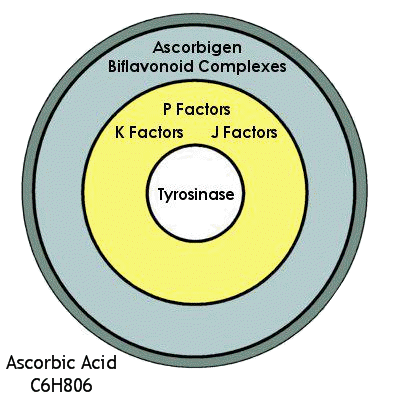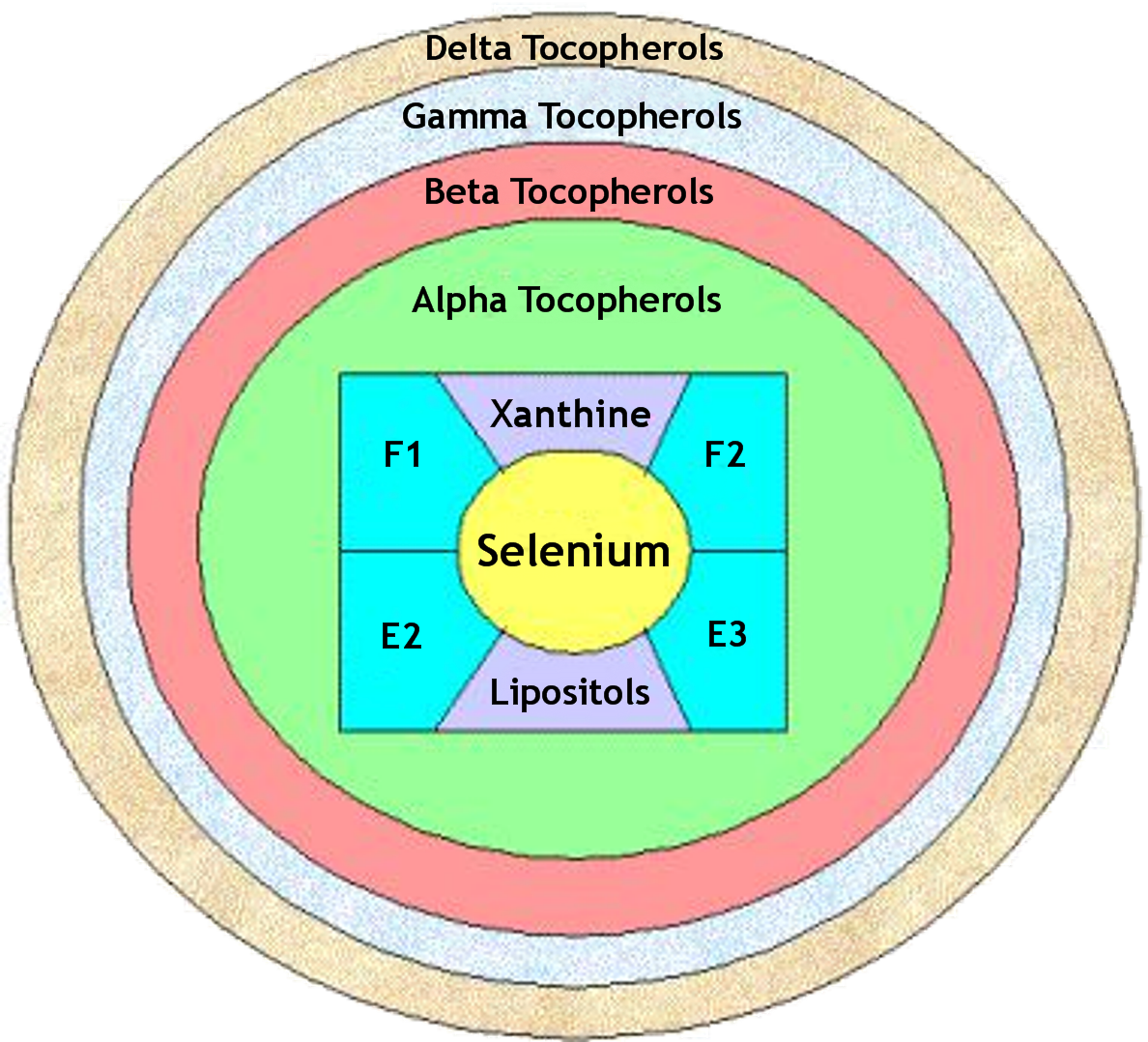
The Dangers of Supplements
THE fact that over half (53%) of Americans take supplements is staggering in itself, but the sad reality is yet more staggering; for nearly every American ingests large quantities of supplements in the processed foods they eat, and in spite of this massive dosing, or perhaps more accurately, partly because of this, America is a sick nation. If a lack of supplementation is America’s problem, why then are the major causes of deaths in America diseases which are preventable and lifestyle related? If supplementation is the cure, why do Americans (who are so highly dosed) have a 41% chance of getting cancer (the 7th highest cancer rate in the world1), and why do 8 out of every 100 (8.3%) of Americans have diabetes?2
In our last couple of health articles, we discussed the problems associated with supplementation, and saw the complexity and interdependence of nutrients, as well as sources of nutrient supplements. There are, however, other very real dangers of using supplements – some of which we would like to discuss below:
Supplements in General
More than 6,300 reports of serious adverse events associated with dietary supplements, including vitamins and herbs, streamed into the FDA from supplement companies, consumers, health-care providers, and others between 2007 and mid-April of 2012. The reports by themselves don’t prove the supplements caused the problems, but the raw numbers are cause for some concern. Symptoms included signs of heart, kidney, or liver problems, aches, allergic reactions, fatigue, nausea, pains, and vomiting.3
The reports described more than 10,300 serious outcomes (some included more than one), including 115 deaths and more than 2,100 hospitalizations, 1,000 serious injuries or illnesses, 900 emergency-room visits, and some 4,000 other important medical events.4
Toxic Inactive Ingredients
The majority of supplements sold in the market contain a host of “inactive” ingredients: harmful chemical preservatives, solvent extraction of animal skins, fillers, binders, colorings, flavors, glazing, disintegrants, sweeteners, etc. Let’s briefly consider the most commonly used ones. Consider a very common one, for example, Magnesium Stearate, also known as Stearic Acid. It is made by hydrogenating cottonseed or palm oil, and is used throughout the supplement industry as a lubricant. It has been found to rapidly (within 8 hours) collapse T-cell membrane integrity,5 significantly impairing T-cell dependent immune responses. Furthermore, “The addition of palmitate or stearate to cultured cells led to activation of a death program with a morphology resembling that of apoptosis. Palmitates and stearates caused cardiac and other types of cells to undergo programmed cell death.”6
The list of toxic chemicals used as additives in supplements includes: Sodium Benzoate and Potassium Benzoate (preservatives which form Benzene, a known carcinogen, in the presence of ascorbic acid7), Methylene Chloride (used to coat tablets), and food colorings. It’s important to mention to vegetarians that capsules made from gelatin come from animal bones, marrow, or tissue scraps, and may include diseased tissues.
The physiochemical form of synthetic isolates is usually crystalline in structure (different than vitamins found in whole foods), making it very difficult for the body to utilize them. There are many other factors which question the usefulness of synthetic vitamins and supplementation of other nutrients which this short article cannot include. Let’s now consider some specific nutrients and some research concerning them.
Vitamin C
The real Vitamin C complex however, contains a myriad of nutrients, including organic copper, bioflavonoids, enzymes and coenzymes, trace mineral activators, antioxidants, etc. The ascorbic acid fraction of this complex is only the preservative or anti-oxidant portion which actually serves to preserve the nutrients of this marvelous nutritional complex.8

By manufacturing high-dose ascorbic acid supplements, we have opted to extract one component and give it at a very high level, not knowing what we are doing to the system. It is a fact that the body cannot assimilate (use) high-dose fractions of nutrients without first putting them into a form that is functional to the human body. In the case of ascorbic acid, the body will scour the system for the missing components of the Vitamin C complex in order to utilize the ascorbic acid, and can actually cause deficiencies in these nutrients. Much of this chemical ends up in the urine because it cannot be utilized by the body in its fractionated form.9
Ascorbic acid, (commonly known as Vitamin C) caused genetic damage at a rate of just 500 mg/day according to British researchers in a 6 week study, reported in the New York Times on April 9, 1998 in an article by Jane E. Brody. As expected, it acted as an antioxidant on one part of the DNA (that is the part that is usually measured), but was also found to act as a pro-oxidant and actually caused genetic damage to another portion of the DNA. In fact, Vitamin C supplements have been linked to genetic damage as far back as the mid 1970s.10
The April 16, 2000 issue of USA Weekend, reported the results of a study performed at the University of Southern California. It revealed that people who took 500 mg/day of ascorbic acid for one year had 2.5 times faster progression of thickening of the carotid artery than those who did not take any.
The study also revealed that smokers consuming 500 mg/day of ascorbic acid had 5 times the rate of hardening of the carotid artery.11 These are just a couple of examples of the harm that can come from using synthetic isolates in place of full complex nutrients found naturally in whole foods.
Calcium
The latest blow against calcium supplements was a report by German and Swiss researchers who followed almost 24,000 adults for an average of 11 years. They found that regular users of calcium supplements had an 86% increased heart-attack risk compared with those who didn’t use supplements, as reported in the June 2012 issue of the journal Heart. On the other hand, there was a statistically significant 30% reduction of heart-attack risk among adults with a moderately high intake of calcium from food itself.12

Vitamin D
Ergocalciferol, Vitamin D2, is synthetically produced from irradiation of ergosterol derived from the mold ergot.13 After describing some of the differences in D2 and D3, Lisa A. Houghton and Reinhold Vieth say “The scientific community is aware that the molecules (D2 and D3) are not equivalent. Therefore, Vitamin D2 should no longer be regarded as a nutrient appropriate for supplementation or fortification of foods.”14
The commercial production of Vitamin D3 is completely dependent on the availability of either 7-dehydrocholesterol or cholesterol. 7-Dehydrocholesterol can be obtained via organic solvent extraction of animal skins (cow, pig or sheep) followed by an extensive purification. Cholesterol typically is extracted from the lanolin of sheep wool and after thorough purification and crystallization can be converted via a laborious chemical synthesis into 7-dehydrocholesterol. . . . Next the crystalline 7-dehydrocholesterol is dissolved in an organic solvent and irradiated with ultraviolet light to carry out the transformation (similar to that which occurs in human and animal skin) to produce Vitamin D3.
This Vitamin D3 is then purified and crystallized further before it is formulated for use in dairy milk and animal feed supplementation. . . .15
The major producers of Vitamin D3 (used to “fortify” milk and other foods) are the companies F. Hoffman LaRoche, Ltd (Switzerland) and BASF (Germany). LaRoche was the first company to mass produce synthetic Vitamin C, it makes numerous industrial chemicals and drugs including: the the anti viral drug Tamiflu for flu,16 the acne drug isotretinoin, marketed as Accutane and Roaccutane (also used as a form of chemotherapy for some cancers, and has been linked to a number of severe side effects, and remains highly controversial.)17 It is currently owned by DSM – the world’s largest manufacturer of D3.18
Vitamin E

“Vitamin E” is the collective name for a group of fat-soluble compounds with distinctive antioxidant activities. It is added to many oil containing products as a preservative. Once again, when certain constituents of a good thing that God made are isolated from it, this creates unforeseen problems.
And there is more bad news, from a study of 35,000 men reported in the Oct. 12, 2011 issue of the Journal of the American Medical Association: Daily Vitamin E supplementation may increase the risk of prostate cancer among healthy men.19
Another study found that taking Vitamin E supplements significantly increased the risk of prostate cancer in healthy men even after they stopped taking them.20
Two analyses have linked as little as 400 IU a day to a small but statistically significant increase in mortality.21
The role that nutrients play is vital, but it is this author’s view that supplements are chemicals (disguised as nutrients), and should be recognized for what they are, and avoided. Far safer it is to get our nutrients in the forms and combinations which God made them, i.e., in the food we eat.
References:
1. “U.S. Has 7th Highest Cancer Rate in the World” WebMD Health News, by Denise Mann
http://www.webmd.com/cancer/news/20110123/us-has-7th-highest-cancer-rate-in-the-world
2.http://www.diabetes.org/diabetes-basics/diabetes-statistics/
4. Ibid
5. Immunology 1990 70 379-384 Molecular basis for the immunosuppressive action of stearic acid on T cells. P.W. TEBBEY & T.M. BUTTKE Department of Microbiology and Immunology, East Carolina University School of Medicine, Greenville, North Carolina, U.S.A. Accepted for publication March 06, 1990
6. Sparagna, GC, Hickson-Bick, DL, Department of Pathology and Medicine, University of Texas Health Science Center, Houston. American Journal of Medical Science, Jul 1999; pg. 15-21.
7. Data on Benzene in Soft Drinks and Other Beverages - Data through May 16, 2007
http://www.fda.gov/Food/FoodborneIllnessContaminants/ChemicalContaminants/ucm055815.htm
8. Integrative Endocrinology: “The Rhythms of Life,” by By Donald R. Beans p. 5
9. Ibid
11.See http://www.cbc.ca/news/technology/vitamin-c-pills-linked-to-hardening-of-arteries-1.221815
12. Release Date: 08/02/2012 Consumer Reports Investigates Vitamins and Supplements: Ten Dangers That May Surprise You
http://pressroom.consumerreports.org/pressroom/2012/08/my-entry.html
13. The case against ergocalciferol (vitamin D2) as a vitamin supplement By Lisa A Houghton and Reinhold Vieth, The American Journal of Clinical Nutrition October 2006 vol. 84 no. 4 694-697
14. Ibid
15. Vitamins in the Prevention of Human Diseases, edited by Wolfgang Herrmann, Rima Obeid p. 375
16.http://www.roche.com/responsibility/access_to_healthcare/tamiflu_corpres.htm
17. http://en.wikipedia.org/wiki/Hoffmann-La_Roche
18.http://www.dsm.com/markets/foodandbeverages/en_US/products/vitamins/vitamin-d.html
Learn of what God says about looking within.
Gardening - Fall Activities
These are important things to do in your garden now!
The Lunar Sabbath - Part 3 - The Divine Number
What is the purpose for numbers? And what does that have to do with the fourth commandment?
Health Corner - The Dangers of Supplements
You could be consuming something that you think is healthy, when it could be contributing to disease and even the very problem you are trying to avoid.
A Medical Missionary Academy
The Living Waters Medical Missionary Academy in Fiji opened its doors in the second semester of 2011... Find out more.
Recipe
Simply Yummy Pancakes
Think on These Things
An Addiction all Christians should have...
Seventh Day Home Church Fellowships is an association of Sabbath-keeping groups, which through web & tele-conferencing provides means for study, fellowship, and jointly organized missionary projects.
Website: www.seventhdayhomechurchfellowships.org
Email: admin@seventhdayhomechurchfellowships.org
Seventh Day Home Church Fellowships:
P.O. Box 262, Laconia, NH 03246, U.S.A.
